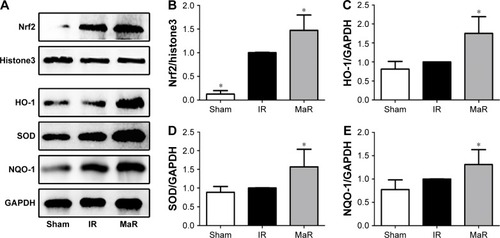Figures & data
Figure 1 MaR1 alleviated renal injury.
Abbreviations: BUN, blood urea nitrogen; Cr, creatinine; IR, ischemia/reperfusion group; MaR, IR plus MaR1 group; MaR1, Maresin 1.
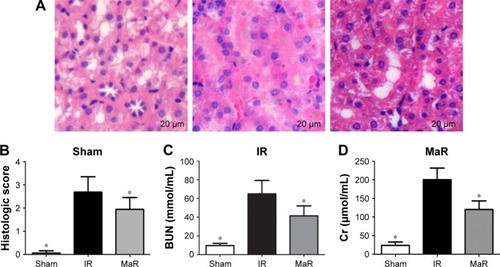
Figure 2 MaR1 decreased inflammation in the kidney after IRI.
Abbreviations: IR, ischemia/reperfusion group; IRI, ischemia/reperfusion injury; MaR, IR plus MaR1 group; MaR1, Maresin 1; TNF-α, tumor necrosis factor alpha.

Figure 3 MaR1 inhibited the expression of TLR4 in the kidney after IRI.
Abbreviations: IR, ischemia/reperfusion group; IRI, ischemia/reperfusion injury; MaR, IR plus MaR1 group; MaR1, Maresin 1.
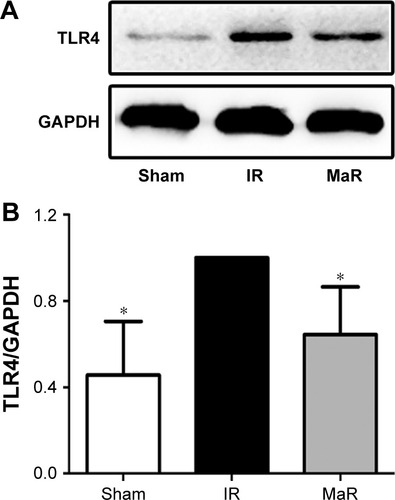
Figure 4 MaR1 inhibited MAPK/NF-κB pathways in the kidney after IRI.
Abbreviations: IR, ischemia/reperfusion group; IRI, ischemia/reperfusion injury; MaR, IR plus MaR1 group; MaR1, Maresin 1.
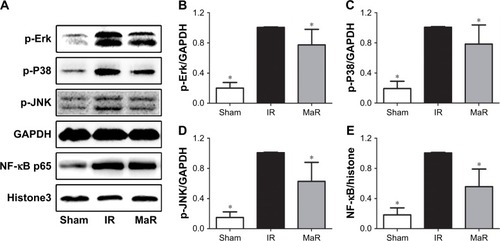
Figure 5 MaR1 suppressed oxidative stress in the kidney after IRI.
Abbreviations: IR, ischemia/reperfusion group; IRI, ischemia/reperfusion injury; MaR, IR plus MaR1 group; MaR1, Maresin 1; MDA, malondialdehyde.
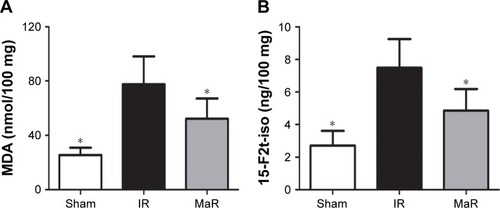
Figure 6 MaR1 improved the activation of the Nrf2 pathway in the kidney after IRI.
Abbreviations: IR, ischemia/reperfusion group; IRI, ischemia/reperfusion injury; MaR, IR plus MaR1 group; MaR1, Maresin 1.
